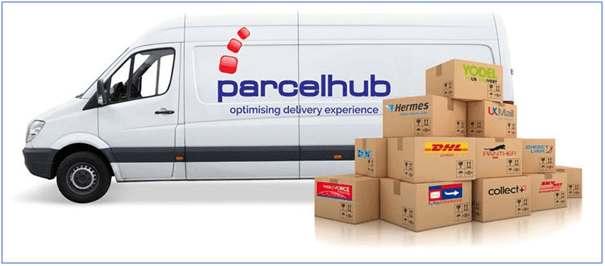When a logistics company is on the hunt for top-class logistics management tools, knowing where to start can be a little daunting. There’s a huge range of options available right now. While it’s great for businesses to have a lot of scope and choice, this also means that finding viable software solutions can get tricky.
There are three main types of logistics management software: Warehouse Management Systems, Enterprise Resource Planning (ERP) systems and Integrated SCM suites. It is often difficult for companies, particularly third-party logistics companies, to make the right selection because they require specialized capabilities that may not be provided by all three types of logistics management software. Let’s take a look at how to use and choose the next logistics management software platform.
Table of Contents
Standalone Logistics versus an Integrated Suite
The variety of logistics management solutions and the unique needs of businesses make decisions more difficult. However, this also increases the importance of choosing the right logistics management solution. And that decision starts with deciding whether standalone logistics management, ERP or Integrated SCM offer you the most value.
Ultimately, warehouse management tools are built to increase the productivity of warehouse operations. Therefore, the long-term goal is to save money by speeding up work routines and getting products out faster. The major difference between standalone logistics and integrated SCM is that the former doesn’t accommodate other supply chain operations.
It is true that some standalone software includes access to transportation management tools. However, these capabilities are limited as you need a full SCM setup to effectively oversee supply chain management. It covers everything from supply chain planning and execution to demand planning and gives you the ability to streamline transportation routines.
Standalone solutions are less dynamic, but they still cover the control of inventory and the refining of warehouse functions like picking, packing, slotting and shipping. ERP systems, on the other hand, increase transparency by making it easier to track and monitor operational processes. However, take note that not all ERP systems include core logistics tools.
Key Features and Value-Added Services
To decide which solution is best for your business, first you’ve got to know what they can do. We recommend taking a close look at some of the specialized functionalities which 3PL companies can use to boost their bottom line and improve their supply chain management. Businesses that provide customers with value-added services (such as light assembly or kitting) should look for a system that helps them record and cost these processes. In this case, standalone logistics is a valuable choice, but you will also find such capabilities in high-level SCM solutions. For specialist labelling, it may be necessary to invest in a comprehensive ERP suite.
The diagram below shows the activities for providing value added services

Multi-Client Architecture
The majority of warehouses handle more than one customer. Therefore, they need logistics and supply chain software which can accommodate inventory and purchase order processes for a (potentially) large number of clients. If you’re looking at cloud-based tools, be careful when shopping. Ensure that the system has the right chain management architecture and not just a multi-client deployment model.
Costing and Invoicing Control
Whether you decide to work with standalone logistics management or integrated SCM tools, accurate inventory tracking is vital. The software should help you formulate, process and apply service contract policies quickly and easily so customers can be invoiced on time, every time. To offer maximum value, your 3PL invoicing tools must provide a clear window on receiving, put-away, storage and shipping tasks.
Parcel Carriers
It is common for 3PL companies to work closely with mainstream parcel carriers. Services like UPS and FedEx are integral to warehouse routines, and the smoother these interactions go, the more productive the business can be. Some SCM systems offer the chance to automatically send and receive shipping data. This saves time and reduces the number of operational errors, as well as ensuring on-time delivery.

Client Web Portals
Client and customer web portals can be incredibly valuable because they give 3PL companies full inventory control even when off-site. Inventory figures, product histories and shipment records are all accessible remotely with the right kind of logistics software.
The full content is only visible to SIPMM members
Already a member? Please Login to continue reading.
References
Adam Robinson. (2015). “6 Benefits of Applying Useable Data in Logistics for Continuous Improvement”. Retrieved from https://cerasis.com/2015/11/12/data-in-logistics, accessed 15/09/2018.
Dovetail. (2016). “3PL Software – For Optimal 3PL Management”. Retrieved from http://www.dovetail.co.za/3pl-software, accessed 15/09/2018.
Kelvin Ong. (2017). “Emerging Trends of Autonomous MHE for Modern Warehousing”. Retrieved from SIPMM: https://publication.sipmm.edu.sg/emerging-trends-autonomous-mhe-modern-warehousing, accessed on 02/09/2018.
MukeshKhadka. (2011). “BusinessIntelligence for Transportation and Infrastructure Systems”. Retrieved from https://www.westernite.org/annualmeetings/15_Las_Vegas/Papers/7B-Paz-Cruz.pdf, accessed 15/09/2018.
RiteshPatil. (2017). “List of Key Features and Functions of Logistics Management Software”. Retrieved from https://medium.com/@ritesh.patil732/list-of-key-features-and-functions-of-logistics-management-software-cb17bd021be5, accessed 15/09/2018.
Syed Muhamad Faizal. (2018). “The Five Essential Methods for an Efficient Warehouse Operation”. Retrieved from SIPMM: https://publication.sipmm.edu.sg/five-essential-methods-efficient-warehouse-operation, accessed on 05/09/2018.

